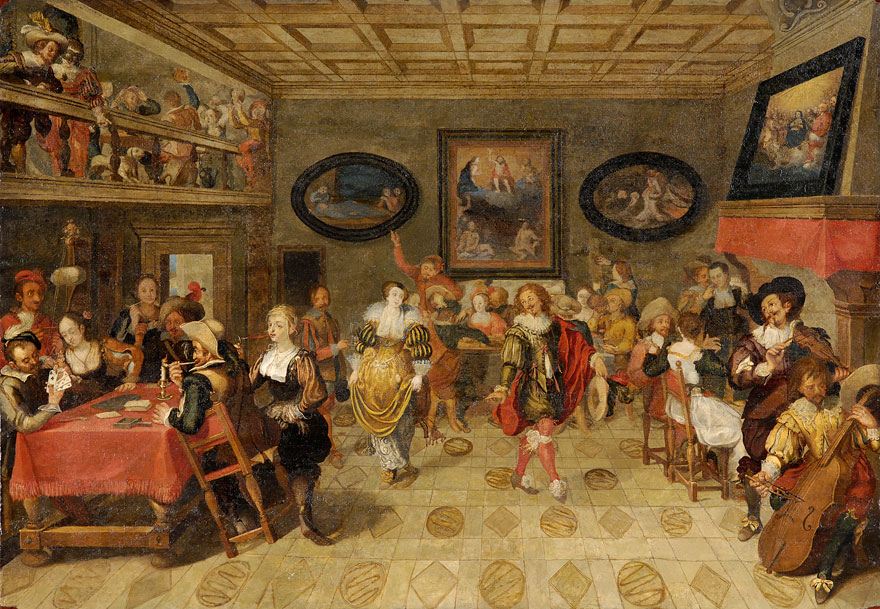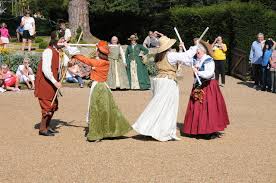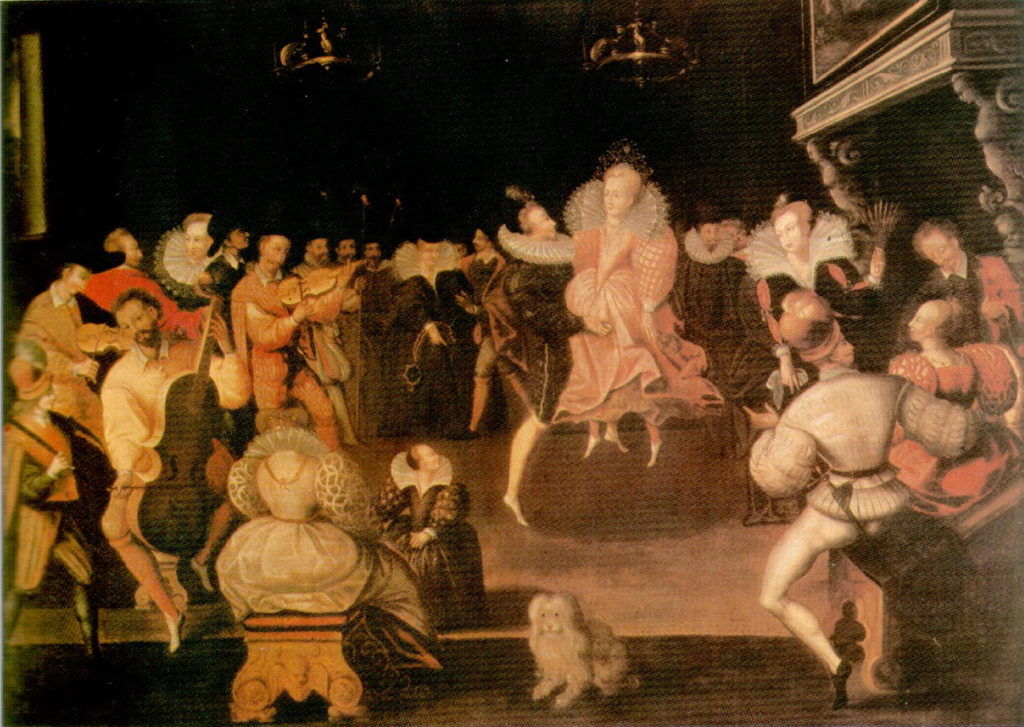Dancing was a pastime enjoyed by everyone, regardless of income or status. There were, however, differences in the styles of dances that were undertaken by the different classes. For the upper classes dance was all about elegance, about showing skill and prowess on the dance floor. For the lower classes dancing was all about fun and enjoyment, a respite from the toils of the working week.

Upper Class Dances in the Tudor Period
Contents
Many of the dances that were performed at court had been brought to England from Europe. Though traditional dances were still enjoyed in England, they were more likely to be performed by the common folk. There were a number of dancing masters employed by the royal court to teach nobles and courtiers the new dances as they were brought over.
The rich classes also had access to various new music in the court that was inaccessible to the poor people. Many courtiers and noblemen travelled to different countries during the Renaissance period and learned new music and dances which they brought back home.
Although the traditional English dance was still the most popular, these new foreign forms of dances were very sophisticated and often a little complicated which made them a favourite of the upper-classes.

Some of the most popular dances came from France, Italy and Spain and involved complicated and intricate steps that were often difficult to master. Many of the biggest and most popular dances of the year were performed on the occasions of Christian holidays such as Twelfth Night, April Fools’ Day and All Hallows Day.
Tudor Court Dances
Many of the dances that were performed at court were simply out of reach of the lower classes. Not only did they not have access to dancing masters, but they were also unable to use the new musical instruments that were being introduced at court to produce the new dance music. Many of these new instruments were bulky and expensive. The Pavan dance was popular at court as it was in the form of a processional dance, and there were only five steps to master.

The Galliard dance usually followed the Pavan and was more lively and energetic. The music used to accompany the Almain dance was played using lutes and the new keyboard instruments of the time. One of the most popular, the Gavotte dance was a couples dance which became known as the Kissing Dance, which probably accounts for its popularity at the time.
Types of Tudor Dances
While the majority of Tudor dances were performed by couples, there was very little physical contact between the dancers. Often only the fingertips of the dancers would touch, as with the Pavan dance or the Cinque Pas. There was however one dance which allowed the dancers to embrace each other, which of course was very popular at court.
Tudor Dance Names
That was the Volt dance. The Volt dance was the most suggestive dance of the time and included the women being lifted high into the air by their male dance partners. For many, this would be the only physical contact they would be allowed with someone that had caught their eye.

While the dances which had come from France, such as the Saraband dance, the Courant dance and the Tourdion dance were all sedate and slow-moving, that Spanish dances such as the Canary were much more lively. Italian dances too, such as the Saltarella dance were fast-paced and enjoyed by the dancers at court.
Tudor Dance Facts
Unlike the rich upper-class people, the poor people enjoyed the more traditional forms of dancing. The jig, morris etc were the common dance forms among the poor people. The Tudor dance, thus varied according to social classes. The introduction of new music from foreign countries had a great role to play in it.
Tudor Dances for the Poor
The poor people had no access to the stately court music or various kinds of foreign dances form that happened in the court. Their source of dance and music were the trending fashion and the ones they saw in the theatre. They usually preferred traditional country dancing.

The country dance was performed in circle or square sets and was repetitive. There were different types of country dances that were passed down through generations. The poor people dances during festivals and fairs which were regulated by seasonal events. Old customs were important in this regard, such as dancing around the maypole was common for the people.
The Carol, performed during Christmas was the most popular form of dance and song.
More Info On- Tudor Dances and Dance Forms, Dresses, England Musicians, Stringed Instruments List